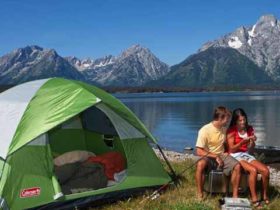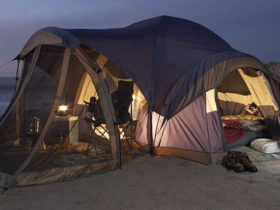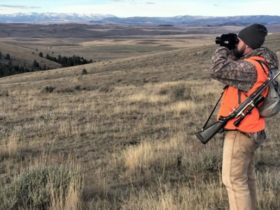There is no better feeling than reconnecting with yourself while you are in the lap of nature. While some people like to soak in the scenic beauty of the oceans or mountains and absorb the peace that it accompanies, there are others who feed their soul by exploring the wilderness, i.e. by going camping and hiking.
Here’s a huge shoutout to all the adventurers out there!

There are certain things you must know in order to stay safe when going hiking and camping. And, for your assistance, we have mentioned the same below. Read on and brace yourselves!
1. Choose a hiking trail that is appropriate for your fitness level
For those of you who are interested to go hiking, bear in mind that you need to be fit and healthy. The activity, as exciting as it may sound, is responsible for causing fatigue and exhaustion. And sometimes, it even takes a toll on your body, if you’re not fit. So, it is ideal to choose a hiking trail that is appropriate for you. That being said, it must match your fitness level.
Did you know that hiking trails are usually marked with difficulty levels? And, these levels range from easy to extreme. You can evaluate your fitness level and then choose a hiking trail accordingly.
2. Say no to hiking alone
Hiking is an adventurous activity and is best enjoyed when undertaken as a part of a group. It is important to understand that chances of losing your track, becoming lost in the woods, or getting injured are higher when you are alone. Hence, it is essential that you conform to a group and stay in their vicinity while hiking. Always refrain from hiking alone, under any circumstances!
3. Learn to read a map and use a compass3
First things first, you must never hike alone (as already mentioned). But still, you must learn to read a map and a compass.
We know it is a technology-driven age and cell phones come in handy at all moments. But, you must be prepared for the worst-case scenario. Don’t be surprised if you find yourself in the midst of the wilderness without any network. It’s pretty common!
In such cases, you must have an alternative. And, that is knowing how to read a map for figuring out the way ahead and using a compass in order to be clear of the directions. This will definitely prove to be very beneficial for the entire hiking group.
4. Carry proper hiking gear
When embarking on a hike, it is pivotal to carry the essential tactical gear without fail. Most importantly, you should invest in a pair of good quality hiking shoes/boots and a backpack. We have already prepared a list of hiking gear that needs to be carried at all costs. Have a look and start your packing today.
- Map
- Compass
- Water
- Healthy snacks
- Wet weather gear
- First aid kit
- Flashlight
- Sunscreen
- Sunglasses
- Knife
- Mosquito/insect repellant
5. Keep your acquaintances informed
Whether you are going on a short trek or a long one and you already have a plan prepared in advance, share this with your family or friends. Make sure you keep them informed of your whereabouts. That being said, there should be at least one person who must be aware of your exact location.
6. Always be aware of your hiking environment
After having selected your hiking trail and before actually heading out for hiking, make it a point to know your environment as it helps reduce the chances of injury. Find out the types of plants and animals present in that region. Also, do some weather research and dress accordingly. Doing this will keep you acquainted with what you shall be dealing with while hiking.
Follow the aforementioned tips and ensure maximum safety on your next hike. Happy and safe hiking!



















Leave a Reply
View Comments